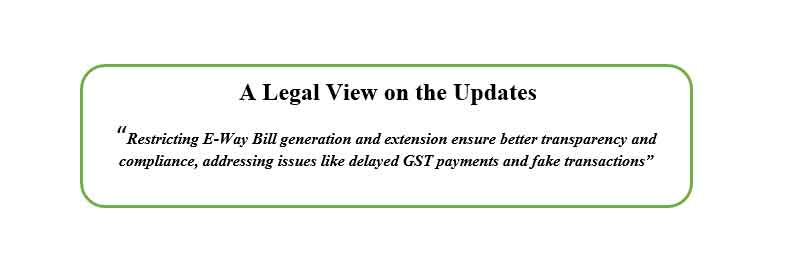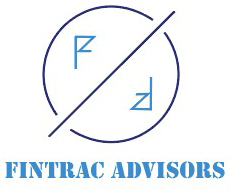Mandatory Multi-Factor Authentication for E-Way Bill and E-Invoice Generation from April 2025

CA Navin Singhal
CA Navin Singhal is a versatile professional with diverse experience in various fields, including:
– Valuation expertise in Insolvency and Bankruptcy cases as a junior valuer
– Statutory audit of listed and unlisted companies
– Stock and receivable audit
– Leadership role in internal audit teams
– GST audit for individuals and companies
His broad range of experience has equipped him with a unique understanding of various aspects of accounting, auditing, and valuation.”
To protect your company’s data and stop illegal access, it is essential to secure your GST account. Multi-factor authentication (MFA) is a robust security feature that enhances the GST platform’s security, particularly when creating e-way Bills and e-Invoicing. Multi-factor authentication (MFA) is now mandated for GST taxpayers due to new security regulations implemented by the Goods and Services Tax Network (GSTN) in India. In keeping with the nation’s larger drive for safe online transactions, this project dramatically increases India’s digital security infrastructure for tax collection.
The National Informatics Centre (NIC) mandates both two-factor authentication (2FA) and multi-factor authentication (MFA) to access the e-way bill or e-invoice system. This measure aims to strengthen the security of the e-way bill and e-invoice systems. The user would now need to supply a one-time password (OTP) in addition to their username and password to authenticate the login.
Taxpayers who have an Annual Aggregate Turnover (AATO) of more than Rs 100 crores have to implement MFA as of August 20, 2023. Since September 11, 2023, MFA has been offered as an optional security measure for companies with AATOs over Rs 20 Crores. MFA will be required for companies whose AATO exceeds Rs 20 Crores as of January 1, 2025.
Beginning on February 1, 2025, the requirement will apply to taxpayers whose AATO exceeds Rs 5 crores. As of April 1, 2025, MFA will be mandatory for all taxpayers. Global security best practices, which increasingly prioritize multi-factor authentication over conventional single-factor techniques, are followed by this stepwise implementation. Furthermore, the GSTN has updated the E-Way Bill procedures. E-Way Bills will only be generated for documents dated within the past 180 days as of January 1, 2025. The maximum extension period will be 360 days from the date of initial generation. These steps are intended to reduce possible fraud and improve India’s digital tax infrastructure.
What Is Multi-Factor Authentication (MFA)?
Multi-factor authentication (MFA) is a security procedure that requires users to enter two or more verification factors to gain access to a system. MFA requires further verification, such as the following, to make sure the user is authentic, rather than just a username and password:
- Something You Know: PIN or Password.
- Something You Own: An OTP delivered to your email or mobile device.
- Something You are: Biometric verification, such as fingerprints.
Your password and an OTP (One-Time Password) provided to your registered email address or mobile number are normally required for MFA on the GST portal.
Why is MFA Important for GST Systems?
For businesses to manage taxes and guarantee compliance, the GST system is essential. MFA provides an additional degree of security, underscoring its significance within the GST framework.
- By drastically lowering the possibility of unwanted access, Enhanced security through MFA shields your GST information and transactions from online threats.
- Preventing Fraud
Even if a fraudster manages to obtain your password, MFA prevents them from accessing your account.
- Adherence to Regulations
To protect taxpayer data, the Indian government has been strengthening cybersecurity safeguards. MFA supports these objectives.
MFA ROLLOUT TIMELINE
Phases of MFA adoption will be determined by the taxpayer’s Aggregate Annual Turnover (AATO):
- For taxpayers with an AATO exceeding ₹100 crore, mandatory since August 2023.
- For taxpayers with an AATO exceeding ₹20 crore, it will become mandatory on January 1, 2025.
- Required for taxpayers having an AATO over ₹5 crore as of February 1, 2025.
- Required for all other taxpayers as of April 1, 2025.
Modernized Systems for Increased Protection
Beginning on January 1, 2025, the National Informatics Center (NIC) will be implementing the revised E-Way Bill and E-Invoice systems. These improvements are designed to ensure the integrity of the portals, which are made to comply with best practices and government security procedures.
Key Changes in E-Way Bill Regulations
Important modifications to the E-Way Bill system are described in the advisory:
Date Restrictions for Documents
- The generation of E-Way Bills will be restricted to documents dated within 180 days of the generating date as of January 1, 2025. For example, after January 1, 2025, documents dated prior to July 5, 2024, will no longer be eligible for the creation of an E-Way Bill.
Restricted Extensions:
- Extensions of E-Way Bills will be limited to 360 days from the date of their initial generation.
For instance, an E-Way Bill generated on January 1, 2025, can only be extended up to December 25, 2025.
These steps are intended to combat the abuse of forward-dating and back-dating transactions, which are frequently used to avoid taxes, falsify inventories, and postpone GST payments.

How MFA Operates for Electronic Invoicing and Way Bills
- Steps to Log In: On the GST site, you input your username and password.
- Step of authentication: An OTP is sent to your registered email address or mobile number.
- To confirm your identity, you input the OTP.
- Permitted Access: You can access the e-Way Bill or e-Invoicing system after the OTP has been verified.
How to Turn on MFA for e-Invoicing and GST e-Way Bills
Step 1:
(a.) Verify Your Contact Information Is Current
(b.) Open the GST portal and log in.
(c.) Go to My Profile > Modify Contact Information.
(d.) Make sure your email address and registered mobile number are up to date and working.
Step 2:
(a.) Open the GST Portal and log in.
(b.) Enter your username and password when you visit the GST portal.
(c.) If MFA isn’t already enabled, you’ll be prompted to do so after providing your login information.
Step 3:
(a.) Select Your MFA Approach
(b.) Choose your preferred authentication method. The majority of users choose to use OTP-based authentication, which is provided to their registered email address or mobile number.
(c.) For extra protection, you can also set up app-based authentication if it’s available (like Google Authenticator).
Step 4:
(a.) Finish the Configuration
(b.) To activate MFA, follow the directions. It might be necessary for you to input an OTP that was sent during the process to verify the setup.
MFA will be necessary each time you log in or carry out critical tasks after it has been enabled.
How to Use MFA for e-Way Bill and e-Invoicing Systems
- Log-in Procedure: On the GST or e-Way Bill portal, enter your username and password. An OTP prompt will show up.
- Get the OTP: For the OTP, check your registered email or mobile number. Use an authenticator app to generate the OTP if you are using a tool such as Google Authenticator.
- Enter the OTP: Enter the OTP in the appropriate space. To complete the log-in process, click “Submit.”
- Access the System: You can safely access the e-Way Bill or e-Invoicing system after authenticating.
Repercussions for Non-Compliance
Noncompliance with MFA and E-Way Bill regulations may result in:
- Invalid Invoices: Input Tax Credit (ITC) may be lost as a result of non-compliant invoices.
- Penalties: Incorrect invoicing and E-Way Bill infractions may result in penalties under Section 122 of the CGST Act.
Conclusion
The process of turning on Multi-Factor Authentication (MFA) for e-Way Bills and e-Invoicing on the GST site is simple and greatly improves the security of your company’s data. MFA can be configured with confidence to safeguard business accounts against unwanted access by following this tutorial. Never share your OTP with anyone, and always keep your contact details up to date. With MFA in place, businesses can continue operations securely and efficiently. To improve compliance and secure the GST system, multi-factor authentication is essential for securing e-way bills and e-invoices. To remain compliant and maintain uninterrupted operations, businesses should proactively adjust to these developments.
“Taxpayers are requested to familiarize themselves with these updates and incorporate the necessary adjustments into their compliance processes,” the advisory said.
Disclaimer
The content published on this blog is for informational purposes only. The opinions expressed here are solely those of the respective authors and do not necessarily reflect the views of Fintrac Advisors. We make no warranties regarding the completeness, reliability, or accuracy of this information. Any action taken based on the information presented in this blog is strictly at your own risk, and we will not be liable for any losses or damages resulting from its use. We recommend seeking professional expertise for any such work. External links on our blog may direct users to third-party sites beyond our control. We do not take responsibility for their nature, content, or availability.


